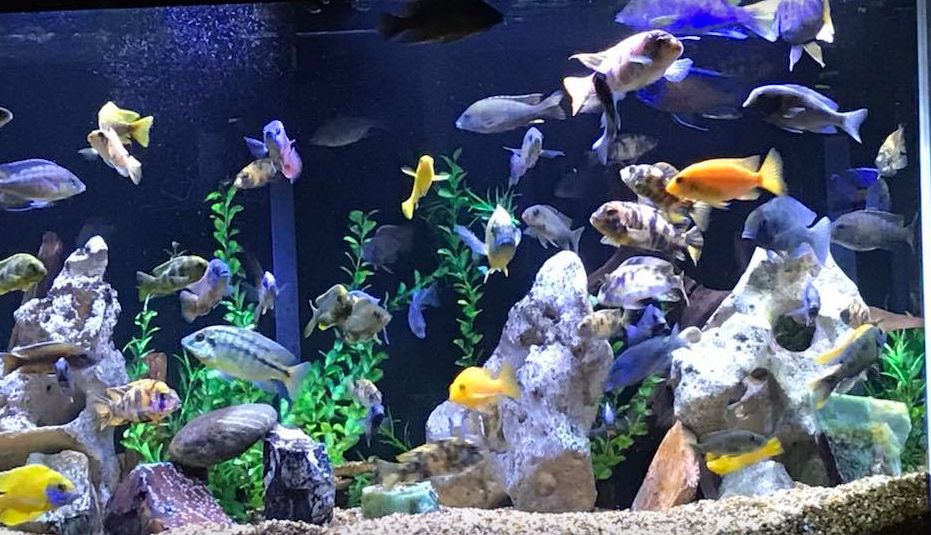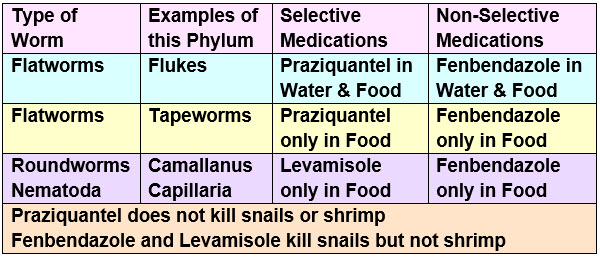
There is a close relative of flukes known as tapeworms. Tapeworms live in the digestive tract of a fish as adults. The larval stage of some species of tapeworms live inside the body cavity of the fish. In other fish tapeworms, snails and even birds can harbor the larvae stages.
Signs of tapeworms include many of the symptoms of many other diseases of fish, like hollow belly, dropsy, bloat and swim bladder problems. But tapeworms are found in many fish which just don’t “thrive” and are smaller and thinner than their tankmates. This chronic condition is very common.
The only way to diagnose tapeworms is by examining the feces of the fish under a microscope. Even then the segments shed by a tapeworm are rarely seen. As a result, this is a disease a home fish keeper will rarely know they have.

Many breeders just automatically “deworm” all the fish they get in their quarantine tanks. They give three treatments two weeks apart. Praziquantel in the food is the drug of choice. They normally mix the praziquantel with levamisole or fenbendazole to pick up nematode worms. This is an excellent idea if one can get the medications.
It is easy to make medicated food. Heat 1/4 cup water (two ounces or 58 milliliters, not a lot) in the microwave. Then blend seven grams of plain animal derived gelatin (Knox gelatin, one packet) into the hot solution with vigorous stirring. Take two tablespoons of dry commercial fish food (pellets or flake) and mix it with just a little of the hot water/ gelatin mixture. Add hot water/gelatin until you get a paste like consistency. If it gets too watery just add more food. To get gel food to float simply mix in a little whipped cream at this point.
Then add roughly 1/16 teaspoon (a 1% to 2% addition) of the medication to the mud. Mix and mash the whole mass thoroughly. Spread it out into a pancake about 1/8th inch (3 mm) thick on a plastic film or a plate. Then put in the refrigerator. If you plan on keeping it for more than two weeks put it in a small plastic bag and freeze.
Feed it to your fish once every two weeks for at least one month (I do three months).
Return to Diseases Menu
.
Aquarium Science Website
The chapters shown below or on the right side in maroon lead to close to 400 articles on all aspects of keeping a freshwater aquarium. These articles have NO links to profit making sites and are thus unbiased in their recommendations, unlike all the for-profit sites you will find with Google. Bookmark and browse!
.

Dave says
In reply to J ….. Treatment is difficult and typically involves pipetting or shallow baths. More about it can be found at the following article: http://aquariumscience.org/index.php/11-15-fish-not-eating/
J says
What is the best recipe for pea puffers, since they will only eat frozen worms/brine shrimp? We have eight new puffers and need to deworm asap. Two are thin and one of these is not eating. We’re very concerned for the little guy. Thanks!!
Dave says
In reply to Yan ….. It shouldn’t affect the snails.
Yan says
HI Dave, does the medicated food, with levamisole or fenbendazole, will affect the snails in the tank if the fish eats it all?